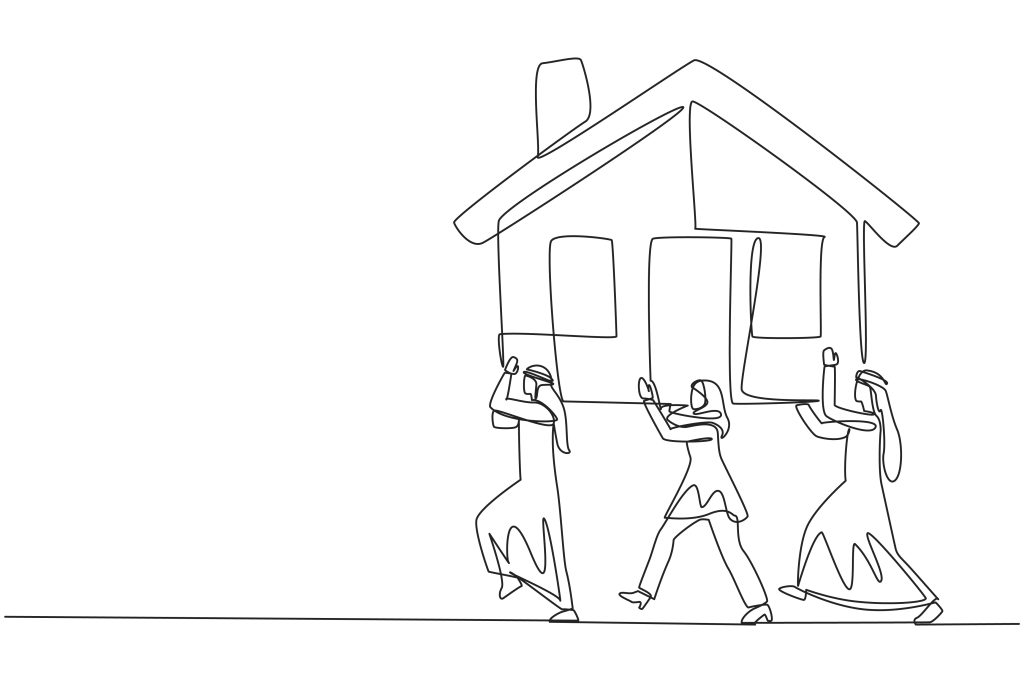Developing a Foundational Understanding of the Sociohistorical Context

This chapter seeks to help you build a foundational understanding of the sociohistorical context of working in the United States. The foundation of the framework for culturally responsive early intervention is to develop a nuanced understanding of the sociohistorical context in which you are providing early intervention services. Just as a house needs a strong foundation to be structurally sound, EI providers need a strong foundational knowledge of the context and system within which we work. This foundation shores up the learning we will do about ourselves and our own cultures and will assist us in building a toolbox full of culturally responsive strategies to use when we interact with families. This chapter is more factually dense than the others and contains links to resources you can engage with to further your learning and context building. If my own experiences and those of the practitioners I work with are any indication, you may be tempted to skim this section or skip it altogether to get to the more action-oriented chapters. I urge you not to and promise that what you learn in this chapter provides a strong foundation for the seemingly more action-oriented work. It’s impossible for any one book chapter to include experiences of all the ethnic, cultural, language, religious, and other identity groups. I urge you to continue your learning beyond what’s written here. I’ve included a curated list of resources at the end of this chapter to help you continue this work.
Chapter Objectives
- Understand why we need the sociohistorical construct
- Recognize race as a social construct
- List and Describe the layers of Racism
- Develop a foundational historical knowledge of the ways that the educational, medical, and legal systems have marginalized identity groups and the impact that this legacy of marginalization has on early intervention.
- Apply your knowledge about the sociohistorical context to reflection and action planning.
Initially, this book was going to be a collection of real-world case studies to help pre-service and in-service early intervention practitioners and other home visitors engage in reflective practice using Bradshaw’s Framework for Culturally Responsive Early Intervention as a way to structure the case studies into chapters. Then, I began interviewing families about their experiences working with EI providers from the dominant American culture. Each of them mentioned the lack of awareness their EI providers had about the context in which they were working. The Black parents that I interviewed were all acutely aware of the power dynamics inherent in their relationships with their EI providers, while many of the White EI providers (me included) seemed completely unaware of those same power dynamics. Early Intervention lives at the intersection of the law, educational, and medical systems. Even the families that reported positive experiences with their White EI providers didn’t think that the providers understood how fraught their families’, friends’, and ancestors’ interactions have been with these systems.
As I heard families reference their frustrations with the lack of awareness providers had of the sociohistorical contexts in which they were working, I connected it to the ways that an incomprehension of the power dynamics at play shows up constantly in my teaching and professional development work. Almost every semester, I teach an introductory-level course on Justice in Education. I teach the course chronologically as a history of the injustices marginalized groups endured and continue to endure in American public schooling. Each of the six times I’ve taught this class, I’ve noticed a pattern in my students’ reactions to the curriculum. Each semester, the White students express shock. They had never learned about these systemic injustices. The Black, Latine, and other minoritized and students of color in class are never shocked, even when they hadn’t previously known about the exact instance we are learning about. These students are able to immediately connect even the content they hadn’t previously learned to their own and their families’ experiences living in the United States.
When I do professional development work with EI providers from the dominant American culture, it is always with folks who opt into the work. These are providers that want to learn how to better serve their clients. Many of the providers started to engage in antiracist work in their personal lives before they began working with me in a community of practice. Even those in-service providers often lack the knowledge of how the sociohistorical context impacts their interactions and relationships with their home visit clients. This general lack of unfamiliarity is a direct result of one of the ways the educational system marginalized and minoritized groups outside of the dominant culture by simply erasing those groups from the curriculum or giving only selected information about historically marginalized groups.
a set of values, beliefs, behaviors, and customs that are upheld by the most powerful people in a society. In the United States the dominant cultural group are White usually of European descent, English Speaking, Christian, Heterosexual, Cisgender.

